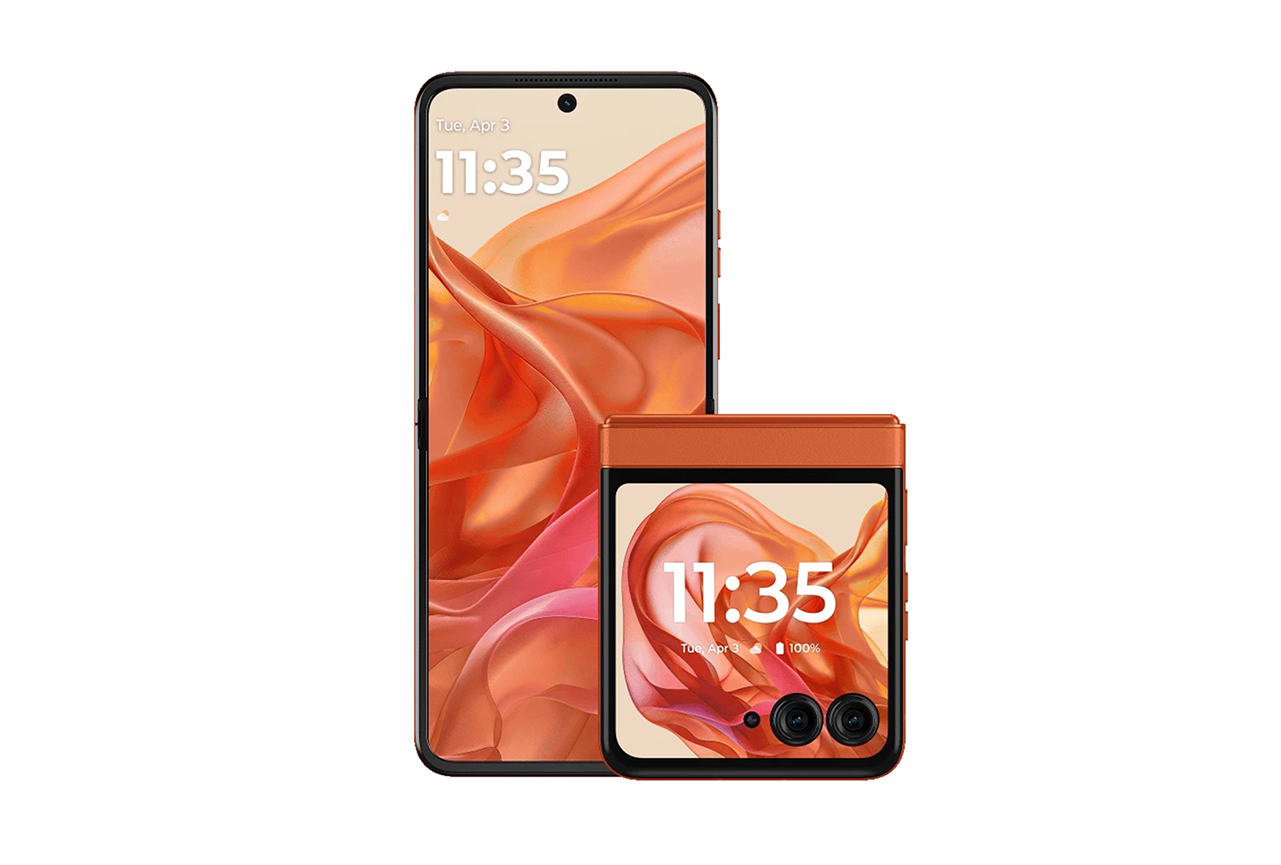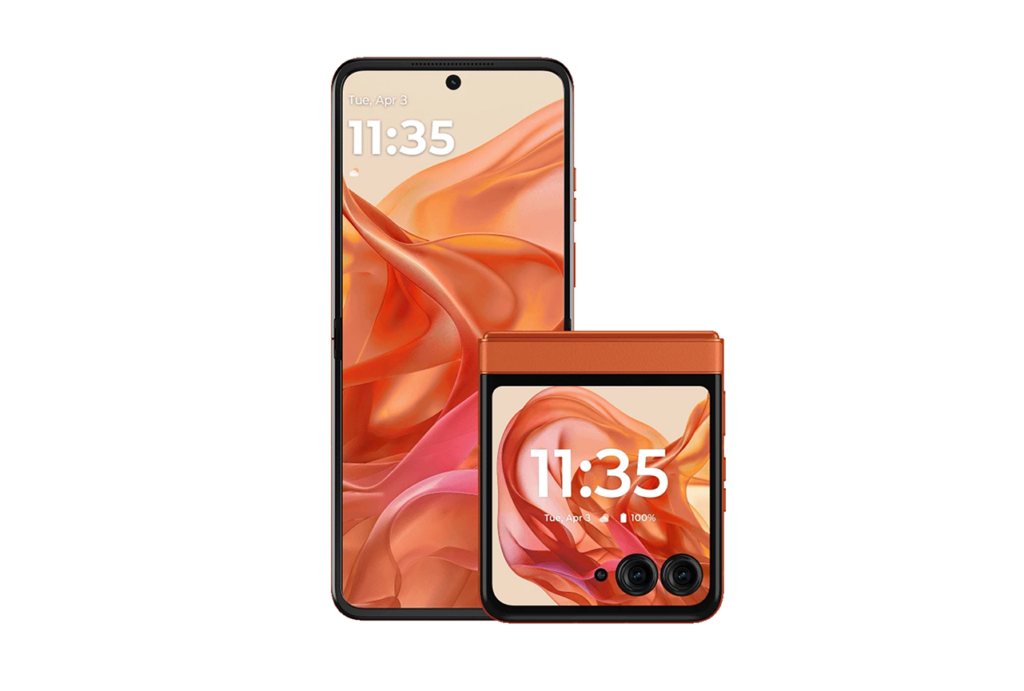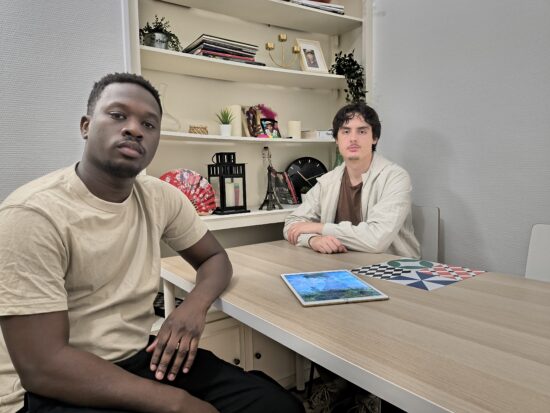We put the Motorola Razr 50 through our rigorous DXOMARK Camera test suite to measure its performance in photo, video, and zoom quality from an end-user perspective. This article breaks down how the device fared in a variety of tests and several common use cases and is intended to highlight the most important results of our testing with an extract of the captured data.
Overview
Key camera specifications:
- Primary:50MP, f/1.7 aperture lens, 0.8 µm or 12.6 MP 1.6µm Quad Pixel, AF, OIS
- Ultra-wide: 13MP, f/2.2, 1.12 µm, FOV 120°
Scoring
Sub-scores and attributes included in the calculations of the global score.

Motorola Razr 50


Use cases & Conditions
Use case scores indicate the product performance in specific situations. They are not included in the overall score calculations.
Outdoor
Photos & videos shot in bright light conditions (≥1000 lux)
Indoor
Photos & videos shot in good lighting conditions (≥100lux)
Lowlight
Photos & videos shot in low lighting conditions (<100 lux)
Friends & Family
Portrait and group photo & videos
Pros
- Generally accurate target exposure
- Accurate and stable autofocus in photo
- High level of details in most tested conditions
- Efficient stabilization in outdoor and indoor conditions
- Mostly accurate white balance in outdoor and indoor conditions
Cons
- Strong exposure instabilities in high dynamic scenes on photo
- Visible noise in most tested conditions
- Low level of details and visible noise when using zoom
- In bokeh mode, occasional inaccuracies in depth estimation
- Visible exposure instabilities and limited dynamic range
- Slightly slow autofocus, with some visible instabilities in indoor and low-light conditions in video
The Motorola Razr 50’s camera struggled to keep up with the performances of other foldable devices’ cameras in our database.
The Razr 50 is the brand’s basic foldable model, equipped with primary and ultrawide lenses, which provide the best image quality results when shooting static subjects in outdoor conditions, such as cityscapes and landscapes.
Image quality decreases noticeably when taking images indoors, or in low-light conditions. And when subjects are moving, artifacts also become quite visible.
The device’s images were low on details when using the zooming features. Like on many other devices in this form factor, there is no dedicated tele camera module, which severely limits zooming capabilities. The ultrawide camera, which has a measured field of view of 16mm, is also not as wide as other phones in this category.
The limited field of view on the ultrawide camera (measured at 16mm), which steps in to provide wide shots, also impacts user experience. It provides images with low details in most ranges.
Video, which was tested in 4K at 30 fps, was the device’s strongest feature. Although videos contained a very impressive level of details, image noise was very visible.
Test summary
About DXOMARK Camera tests: DXOMARK’s Camera evaluations take place in laboratories and in real-world situations using a wide variety of subjects. The scores rely on objective tests for which the results are calculated directly by measurement software on our laboratory setups, and on perceptual tests in which a sophisticated set of metrics allow a panel of image experts to compare aspects of image quality that require human judgment. Testing a smartphone involves a team of engineers and technicians for about a week. Photo, Zoom, and Video quality are scored separately and then combined into an Overall score for comparison among the cameras in different devices. For more information about the DXOMARK Camera protocol, click here. More details on smartphone camera scores are available here. The following section gathers key elements of DXOMARK’s exhaustive tests and analyses. Full performance evaluations are available upon request. Please contact us on how to receive a full report.
Photo
Motorola Razr 50
169
For scoring and analysis, DXOMARK engineers capture and evaluate more than 2,600 test images both in controlled lab environments and in outdoor, indoor and low-light natural scenes, using the camera’s default settings. The photo protocol is designed to take into account the main use cases and is based on typical shooting scenarios, such as portraits, family, and landscape photography. The evaluation is performed by visually inspecting images against a reference of natural scenes, and by running objective measurements on images of charts captured in the lab under different lighting conditions from 1 to 1,000+ lux and color temperatures from 2,300K to 6,500K.
Zoom
Motorola Razr 50
169
DXOMARK engineers capture and evaluate over 400 test images in controlled lab environments and in outdoor, indoor, and low-light natural scenes, using the camera’s default settings and pinch zoom at various zoom factors from ultra wide to very long-range zoom. The evaluation is performed by visually inspecting the images against a reference of natural scenes, and by running objective measurements of chart mages captured in the lab under different conditions from 20 to 1000 lux and color temperatures from 2300K to 6500K.
Video
Motorola Razr 50
159
DXOMARK engineers capture and evaluate more than 2.5 hours of video in controlled lab environments and in natural low-light, indoor and outdoor scenes, using the camera’s default settings. The evaluation consists of visually inspecting natural videos taken in various conditions and running objective measurements on videos of charts recorded in the lab under different conditions from 1 to 1000+ lux and color temperatures from 2,300K to 6,500K.
High level of details, visible noise, slight focus breathing, slight exposure adaptation issue.



